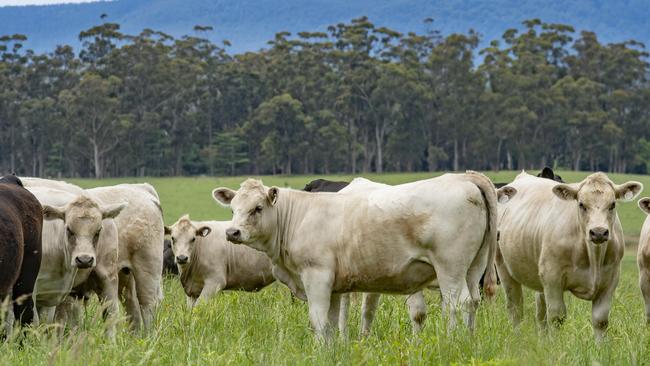Livestock surge and a sprinkle of sunshine give hope for farmers
A surge in livestock prices, reduced workforce shortages and better seasonal conditions have painted a positive picture of the year ahead for Australian farmers.

The value of Australian agriculture is expected to grow this year by $3.7bn thanks to forecast favourable weather conditions and record high livestock production, with improved profits bringing relief for some farmers.
A surge in beef and lamb saleyard prices and strong global demand for Australian meat, reduced workforce shortages and an easing of high costs for inputs such as diesel and fertiliser are the key positives in the year ahead, according to modelling from the Australian Bureau of Agricultural and Resource Economics and Sciences.
It is expected to increase farm profitability for both cropping and livestock producers, although profitability will remain below long-term averages and will differ from region to region because of weather conditions.
Agricultural export values are expected to be the third highest on record, despite a forecast fall of $3.1bn to $68.5bn, driven by reduced exportable supplies of grain and oilseeds following significant stock drawdowns last year.
The September ABARES agricultural commodities and crop reports, released on Tuesday, forecast significant growth in the sector, from $82.5bn in 2023-24 to $86.2bn this financial year.
“We’re expecting to see the price for cattle and sheep increase compared to last year, leading to this significant improvement in farm incomes,” ABARES executive director Jared Greenville said. “The ABARES commodities and crop reports tell a positive story for Australian agriculture, capitalising on demand for our quality products.”
The cattle sector is to be the biggest individual contributor to the overall 4 per cent growth in agricultural production, with beef, veal and live cattle production increasing $2.6bn to a record $16.3bn.
Sheep and cattle prices at saleyards have recovered since the lows of last year and, coupled with high global demand for Australian beef and lamb, will see more farmers selling their livestock, despite better weather and greater pasture availability.
“We have seen more favourable seasonal conditions across large parts of the country, easing input prices, and higher livestock prices supporting farm incomes” Dr Greenville said.
“However, unfortunately not all farms in all regions are expecting to see an improvement.
“Crop production across Australia has been driven by NSW and Queensland, and better than expected seasonal conditions in Western Australia.
“But unfavourable conditions in north and western Victoria and most of South Australia following below average winter rainfall have resulted in lower than expected crop production.” ABARES predicted increased crop production would drive the total value by $760m, offsetting falling global prices. Winter crop production is forecast to increase by 17 per cent to 55.2 million tonnes.




To join the conversation, please log in. Don't have an account? Register
Join the conversation, you are commenting as Logout